Do Cardinals Mate for Life? What You Need to Know!
Last Updated on
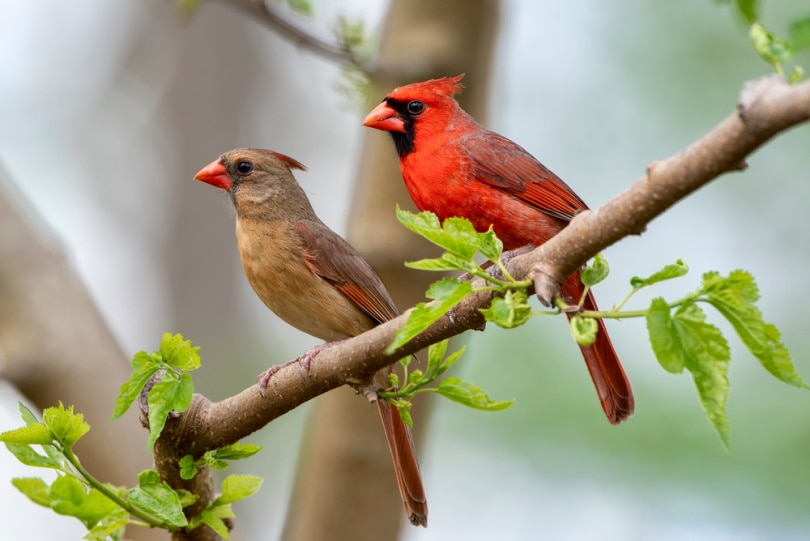
If it’s one bird that’s recognizable it’s the Northern Cardinal. Its beautiful bright red feathers can be seen from several feet away. If you’re an avid birdwatcher or just happened to catch them in your backyard, they’ll be sure to keep your attention for quite some time.
So, what about the Cardinal’s mating habits? Do they mate for life, or do they find different mates throughout their lifetime? Let’s discuss.

Do Cardinals Mate for Life?
Mostly, Cardinals do in fact mate for life, and they’re generally considered monogamous birds. In fact, some Cardinal pairs stay together the entire year right within their nesting area to keep an eye on their young.
However, in some cases, the birds may leave their territory to join the winter plight to warmer areas, though they do often return to their nesting area once spring arrives. There are also cases where female Cardinals may choose a different partner than the previous year.
The most common reason for this includes the mate dying or the female being unsatisfied with the parenting or reproduction abilities of her previous year’s partner. When the latter is the case, she may seek out a higher-quality male for future reproduction.
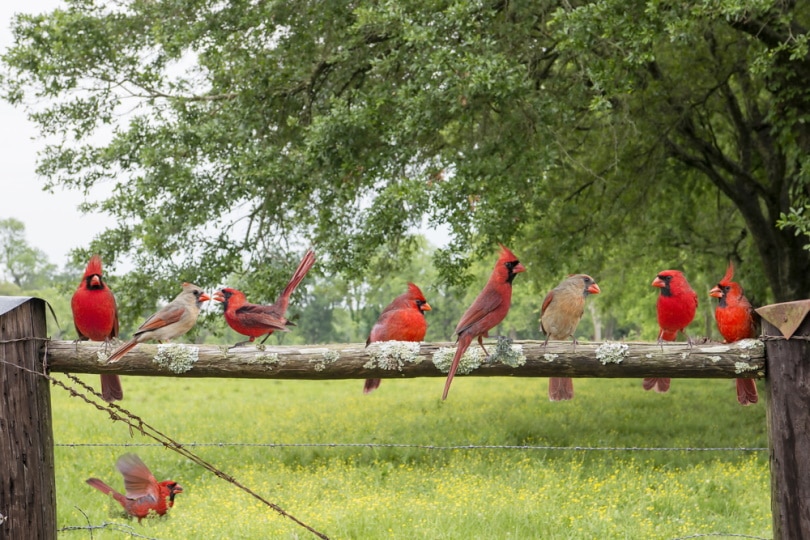
Common Cardinal Mating Habits
Cardinals have mating habits that are similar to other notable bird species. For example, in addition to singing and displaying their feathers, the birds will also display their strength and virility by soaring high into the sky and performing fancy turns and twists as they land.
Female Cardinals often sing while sitting on the nest, and in many cases, this is to signal males to bring food or that they’re ready to mate.
The males are also very caring toward their young, as they will often watch the nest, standing guard to ensure that predators don’t try to steal or eat the young. They’ll also help bring food to the young and watch them while the mother goes off and gathers additional meals.
The breeding season for male Cardinals, similar to deer during the rut, is extremely dangerous as they can easily succumb to harsh winter months if they don’t migrate. They’re also more susceptible to being eaten by predators (such as squirrels, snakes, foxes, and cats) as they’re typically out in the open and on the ground more than normal looking for mates and food.
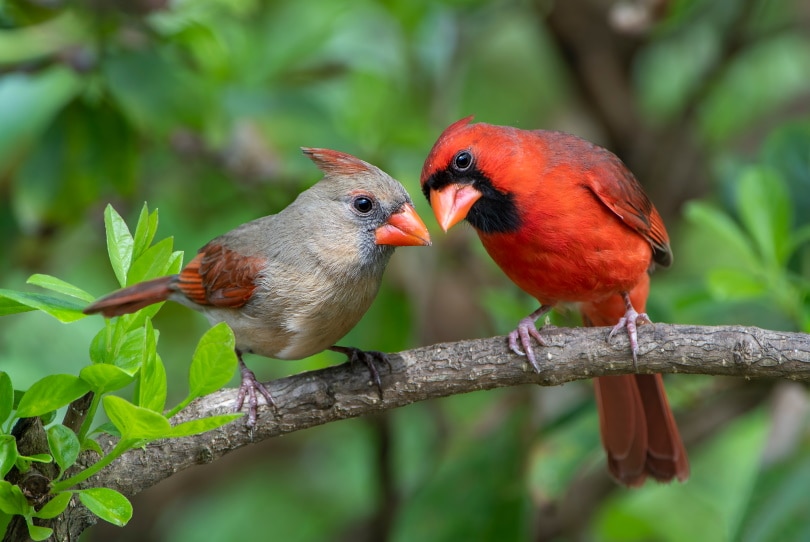
How Long Do Northern Cardinals Live?
Northern Cardinals typically have a lifespan of about 3 years if they’re in the wilderness. This is largely due to the fact that the birds can easily become prey to larger birds and other wildlife while in their prime. However, some birds can have a longer life span which ranges anywhere from 12 to 15 years. And in captivity, Cardinals are known to live as long as 27 years.
At What Age Do Northern Cardinals Reach Sexual Maturity?
Similar to most backyard birds, both female and male Cardinals reach sexual maturity when they’re about 1 year old. This early sexual maturity is one of the main reasons why they still have abundant populations despite heavy predation from larger animals in the wilderness.
On average, these birds will breed anywhere from one to three times a year in the spring and summer months, between March and September.
Early spring is the most active time of their mating season, however. The warming temperatures and fragrant blooming flowers attract Cardinals from the south back to Northern and Midwest states to search for mates.
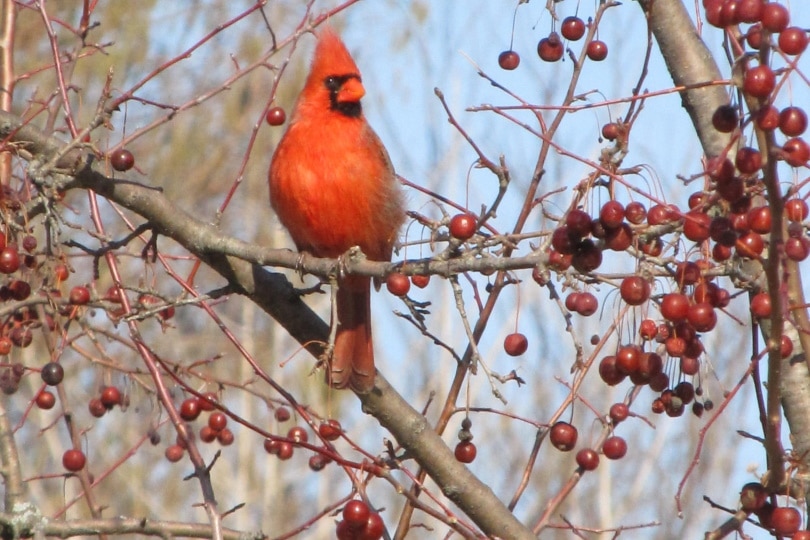
The Northern Cardinal Mating Process
The male Cardinal essentially puts on a bit of a show for female partners. They fly high, low, deep, and wide and use their bird calls to let the females know that they are single and ready to mingle. Once the female chooses a partner, they begin to spend a lot of quality time together.
Granted it’s not dinner and a matinee, however, they do hang around one another for a day or two searching for food and getting familiarized with one another before deciding to mate. Their reproductive organs are similar to most birds, with a female having an opening called a cloaca which is used for urinary secretion, egg-laying, and mating.
You may be surprised to find that their mating habits are fairly similar to mammals. During the mating process, the male and female Cardinals rub their cloacal openings against one another, and during this time the male transfers sperm into the female’s cloaca, where her eggs are fertilized.
After the egg has been fertilized, it incubates anywhere from 10 to 14 days. During this time both male and female birds work to build their nesting location where the female can later lay the eggs.
However, in some scenarios, the female will build the nest all by herself while the male goes out and hunts for food. The nests are usually made of twigs and stems and are tightly woven cups that are usually hidden away from public view for safety reasons.
When building a nest for herself, it’ll take anywhere from 7 to 9 days. Together, the birds can typically build a nest in about 3 to 4 days.
After the mating process, the male birds will vigorously defend their nest and the area around their territory. Male Cardinals are well known for attacking their own reflections and windows, shiny chrome materials, and mirrors. And in some cases, they will even attack other similar-looking birds or small red objects that they may mistake for other males.

How Many Eggs Do Northern Cardinals Lay At Once?
On average, the female Cardinal will lay about two to three eggs after copulation. However, there are some scenarios where they may lay up to four eggs. Once the eggs hatch, the male and female feed the hatchling and care for them for about 9 to 12 days.
When they’re about 10 to 12 days old, the baby birds typically take flight and leave the nest to explore the world. However, even after the birds leave the nest, they will return for food, which is often brought to them by both the male and female birds.
Overall, male and female Cardinals are actually pretty attentive parents, probably more so than other bird varieties. While the mom is taking care of the baby birds, the male is usually out finding more food sources.
What Do Cardinals Eat?
Cardinals have a pretty wide appetite in terms of variety. They are known for munching on a number of different seeds, fruits, and berries. They’ll also eat cherries, blackberries, grapes, Dogwood fruit, pine tree seeds, and some grass.
You’ll also catch Cardinals snacking on small insects, especially when they are caring for their young. So, if you’re planning to attract this bird species to your backyard can we be sure that your feeder has large quantities of seeds (such as sunflower seeds) or nuts.
It’s common for these birds to migrate to the south for the winter for food and warmer temperatures. However, if they find a birdfeeder that’s regularly maintained, you can expect them to stay in your yard all year round, granted temperatures aren’t too extreme for their survival.
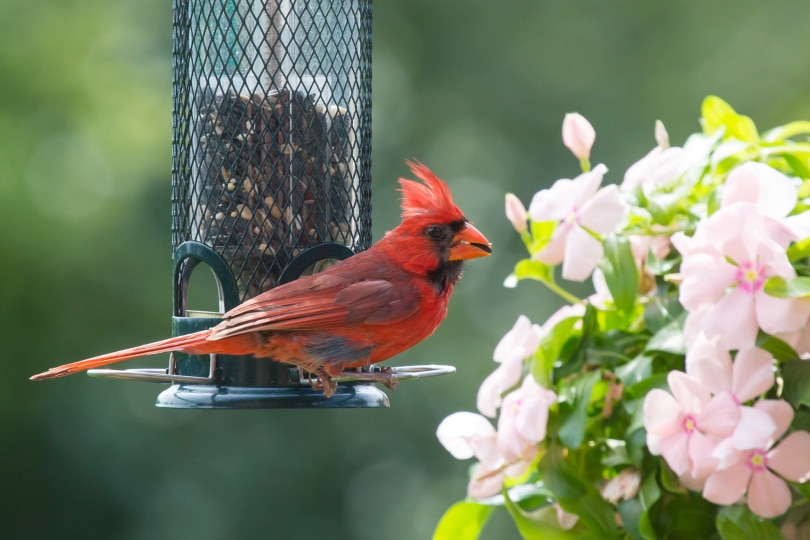
How Big Do Cardinals Get When They’re Mature?
The adult Cardinal will grow to about 6 to 9 inches in length and will weigh anywhere between 1.3 to 1.9 ounces. Both female and male cardinals have bright red crests with black stripes beneath their eyes and surrounding their beaks. Their beaks are short and stout, and you can usually spot an immature Northern Cardinal by their olive-colored under feathers.
How Many Different Cardinals Species Are There?
Currently, there are four different types of cardinal species that are known in the u.s. and all over the world. Most carnal species live in southern, Central, and Northern America, however. These birds tend to migrate for the winter in search of food and warmer weather.
Can You Have a Cardinal As A Pet?
No, the Migratory Bird Treaty Act of 1918 made it illegal to own any type of wild bird as a domestic pet. Before this act, however, it wasn’t uncommon for people to house these beautiful birds indoors. They were actually a pretty popular choice coming likely due to their beautiful song capabilities and vibrant colors.
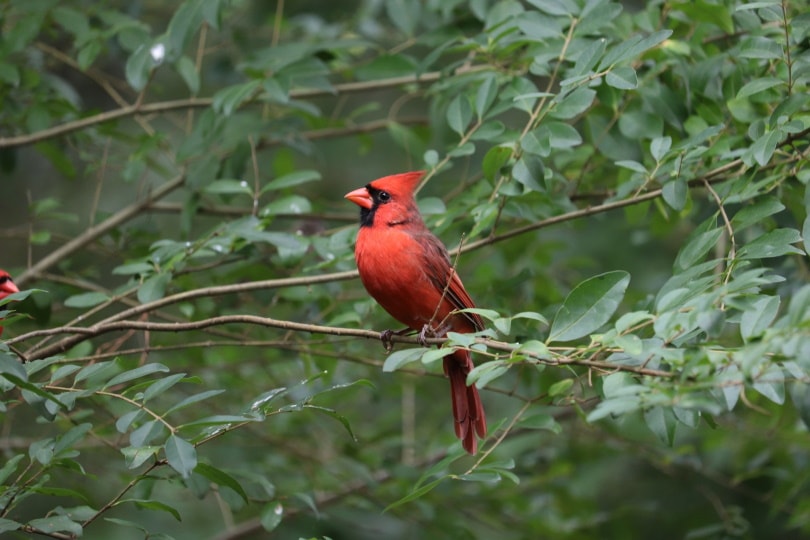

Wrapping It Up
Cardinals are beautiful songbirds that are known for their vibrant red feathers and raccoon-like hoods. For the most part, they are a monogamous bird species and it’s common for them to spend their entire lifetime with the same mate.
However, in some scenarios, this may not be the case and female and male Cardinals may seek out a new partner for the next breeding season.
Featured Image Credit: Bonnie Taylor Barry, Shutterstock
Table of Contents
- Do Cardinals Mate for Life?
- Common Cardinal Mating Habits
- How Long Do Northern Cardinals Live?
- At What Age Do Northern Cardinals Reach Sexual Maturity?
- The Northern Cardinal Mating Process
- How Many Eggs Do Northern Cardinals Lay At Once?
- What Do Cardinals Eat?
- How Big Do Cardinals Get When They’re Mature?
- How Many Different Cardinals Species Are There?
- Can You Have a Cardinal As A Pet?
- Wrapping It Up
About the Author Robert Sparks
Robert’s obsession with all things optical started early in life, when his optician father would bring home prototypes for Robert to play with. Nowadays, Robert is dedicated to helping others find the right optics for their needs. His hobbies include astronomy, astrophysics, and model building. Originally from Newark, NJ, he resides in Santa Fe, New Mexico, where the nighttime skies are filled with glittering stars.
Related Articles:
10 Types of Hummingbirds in Arkansas (With Pictures)
8 Types of Hummingbirds in Nebraska (With Pictures)
5 Types of Hummingbirds in Idaho (With Pictures)
3 Types of Hummingbirds in Mississippi (With Pictures)
8 Types of Hummingbirds in Kansas (With Pictures)
5 Types of Hummingbirds in West Virginia (With Pictures)
5 Types of Hummingbirds in Ohio (With Pictures)
Where Do Nuthatches Nest? Nuthatch Nesting Habits Explained
